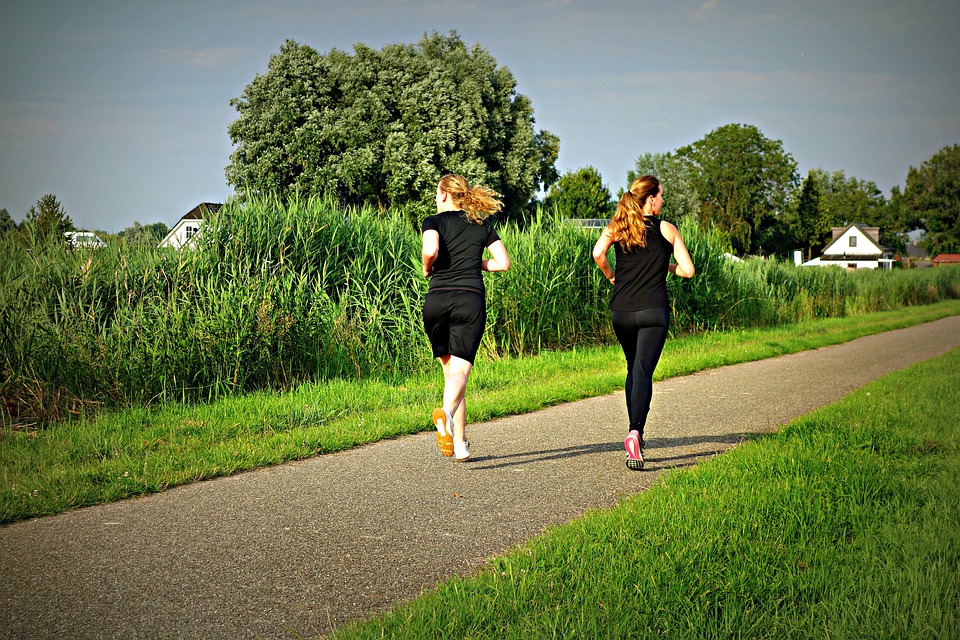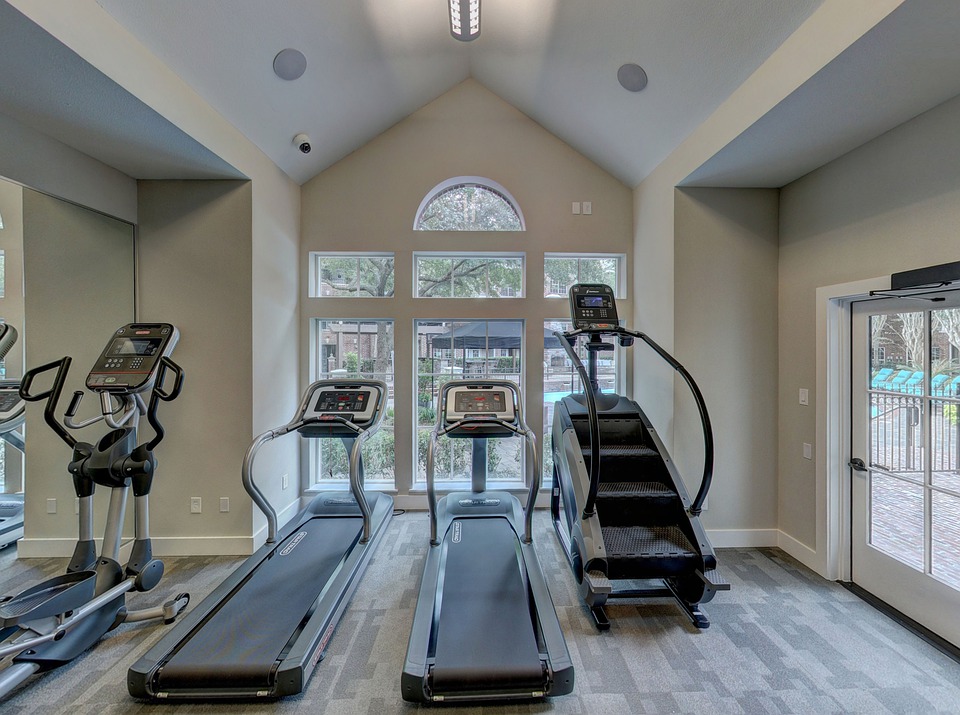
While hills may seem imposing to a runner, conquering them can lead to a more powerful and efficient stride, resulting in faster times.
According to Maryland-based running coach Lisa Levin, training on hills builds muscle strength and can help improve running economy.
Derek Ferley, Ph.D., director of sports science research and sports performance training at the Avera Sports Institute in Sioux Falls, South Dakota, has found that coaches who have long touted hills’ benefits are backed by science.
Ferley, a runner, was surprised to find that there was almost no peer-reviewed research on the effectiveness of hills in marathon training. He decided to conduct his own research using the treadmills at his facility.
The aim of the study was to see if there would be a difference in running speed and endurance between those who ran on an incline and those who ran on level ground. The results showed that those who ran on an incline could run faster and for longer.
Harvard Health explains that there are several benefits to running uphill intervals, one of which is that it improves your lactate threshold. This means that your body produces less muscle-burning lactic acid at the same speeds. Additionally, flat intervals provide the same benefits, but you don’t have to move as fast to see the same results.
When you shimmy up a slope, it requires more from your muscles and nerves than if you were sprinting on level ground. This causes the connections between your body and mind to work more quickly, which makes you more explosive. This ability to use strength quickly also increases your running economy, which is a measure of how efficiently your muscles use oxygen to power you forward. This is a key factor in being successful in distance running.
Ferley’s tinkering with duration, grade, and pace has yielded some interesting findings that can be used to help improve your performance. While he says there’s still more work to be done, you can use his findings, along with those of other experienced coaches, to help take your training to the next level.
Why Are Hill Workouts so Beneficial?
Running uphill is a unique way to stress your body that you can’t replicate on flat land.
That stress results in some fantastic adaptations and benefits:
- There’s less impact running uphill so it’s easier on your joints and connective tissues
- Hills “force” you to run with better form, reinforcing a more efficient stride
- Running up steep grades builds power more safely than running fast on flat terrain
- Hills provide the most specific strength work runners could ask for
- Hill workouts build strength, speed, endurance, and every other metric runners care about!
Hill sessions aren’t necessary for training for a race unless the race is entirely uphill. However, they can be beneficial for any training program.
Since they are so versatile, they can be used at any time during the season.
The results of the hill workout depend on how it is completed.
When Should Hills Be Used In Training?
- Hill sprints: an outstanding workout that can be done anytime during a training season. They’re very effective at accomplishing their goals.
- Short reps: best done in the mid or later stages of a training cycle.
- Long reps: Best done during the earlier phases of training, but can be done (less effectively) during the middle stages of training.
- Hill circuits: a good workout for the middle or later phases of the training cycle. Not my preferred type of workout though.
All training methods are effective, just for different purposes (i.e., hill sprints are great for neuromuscular training but long reps are better for aerobic fitness).
The real value of a workout can be measured by when it occurs, how it’s used, and the workouts that come before and after it in the progression.
Below are some different types of hill workouts and ideas on how to best include them in your training plan: Interval hill repeats: These involve running up a hill for a certain amount of time or distance, then jogging or walking back down to recover, and repeating this several times. uphill tempo run: This is a sustained, but not all-out effort, run up a hill. There are many ways to incorporate hills into your training plan. Two popular types of workouts are interval hill repeats and uphill tempo runs. Interval hill repeats involve running up a hill for a certain amount of time or distance, then jogging or walking back down to recover, and repeating this several times. An uphill tempo run is a sustained, but not all-out effort, run up a hill.
Short Reps
Short hill repetitions are typically what people think of when picturing a hill workout.
An average set would be 8-12 reps. Sets are usually 60-90 seconds long, with a jog-down recovery in between (you turn around at the end of the set and run easy back to the beginning before turning around to start again). An average set would be 8-12 reps.
Typically, hill repeats are run at a pace of 3,000 to 10,000 meters on a 4 to 7 percent grade hill. That is to say, they are short and fast!
They help to improve the body’s VO2 Max, which is the ability to deliver and use oxygen in the muscles.
There is also a strength element to this workout, making it ideal for people who have trouble with injuries.
Here are a few examples of short hill rep workouts:
- 10 x 90sec hills at 5k Pace
- 8 x 60sec hills at 3k Pace
- Descending ladder: 3x90sec, 3x60sec, 3x45sec starting at 10k Pace and getting progressively faster
You can design hill rep workouts to be as flexible as you need them to be. You can change the pace, length of the reps, and the number of reps to suit your needs.
Include these hill workouts in the later stages of your running season to work on power and speed.
Short reps with long recoveries can be used in the early phases of training as a precursor to more challenging workouts.
Long Reps
I have fond memories of holding long reps of 2-4 minutes: I am terrified of them.
My coach had us run hard for 5 times 3 minutes on undulating terrain during college cross country season. The hills were particularly challenging.
I still get nervous thinking about the workout we did at Pig Hill 12 years ago. It wasn’t as intense as other workouts, but it was more challenging mentally because it was longer.
These types of hill workouts can be used for a variety of reasons:
- Early strength-building during the base phase of training
- A type of tempo workout (if the pace is kept under control)
- A replacement for shorter hill reps if an easier day is needed
Slower, longer workouts are more aerobic and are best used in the earlier phases of training.
For Speed on the Road
Ferley’s main area of research has been in running up hills as fast as possible in 30-second intervals. This is similar to plyometric exercises which develop explosive strength and train your muscles to react more quickly and powerfully on any type of terrain, as he explains.
The routine: 30 seconds of sprinting at an incline of 5% to 10%, while holding 5-pound dumbbells.
Start by running 1 to 1.5 miles at an easy pace. Then do some dynamic stretching exercises such as high knees, skips, and lunges. After that, begin running uphill for 30 seconds at a nearly all-out speed. You should be feeling pretty exhausted by the 25-second mark. In between each repetition, rest for 2 to 3 minutes by either walking or jogging slowly. Start with 5 to 8 repetitions and gradually work your way up to 12 to 14.
For Long Trail Runs
Though not quite as effective as shorter, faster inclines, longer hill repeats in Ferley’s studies still boosted many key fitness factors (including runners’ point of exhaustion). And soldiering through a lengthier ascent prepares you better mentally for more-technical courses, he notes.
The workout: 3-minute hill intervals at a 10% incline
Choose to do the workouts that are described in the text. After warming up and doing some drills, take the longer repeats at a pace that is just below your all-out pace (this should be about 70% of the speed you could maintain for two minutes). Jog or walk for three minutes to rest and then repeat the process. Start with two to three repetitions and work your way up to six.
For Better Biomechanics
Use shorter uphill charges to practice better form without wearing yourself down, advises Jim Walker, Ph.D., sport science director at The Orthopedic Specialty Hospital in Salt Lake City. Inclines make you drive your knees high and land with your foot underneath you (versus out in front of you, an error biomechanists refer to as overstriding). As a result, the angle between your thighs when you push off for the next step increases, and more of the energy you generate moves forward instead of upward—making you more efficient while reducing impact forces that may cause injury.
A typical workout might involve running up a hill for 10 to 15 seconds at a 5 to 15 percent grade.
At the end of an easy 3- to 4-mile run, catch your breath before heading uphill. Keep your focus on your form while you run, such as running tall, swinging your arms from your hip to your chin, and squeezing your glutes. Once you’re finished with the uphill run, walk back down and rest until you’ve completely recovered. After that, start with 5 to 6 repetitions and work up to as many as 20. The last one should feel just as springy as the first, Walker says.
To Crush a Hilly Course
If you want to run well on rolling hills, you need to be strong and efficient, says Reichmann. You can practice by running on a route that is similar to your race course, or by doing a session where you push the pace after a series of climbs.
on a flat stretch of road 60-second hill repetitions at a 4% to 5% grade, followed by race-pace miles on a flat stretch of road The workout entails 60-second hill repetitions at a 4% to 5% grade, followed by race-pace miles on a flat stretch of road. This will help you to build power and endurance.
Warm up for light 2 to 3 miles, then do 6 to 8 repetitions of a hilly area at a difficulty of 7 out of 10. Jog down the hill to recover. Take it easy for 1 mile (those more advanced can skip this step) then run 1 to 3 miles at the pace you want to maintain during your goal race before a 1- mile cooldown. This workout lets you experience what it’s like to exhaust your fast-twitch muscle fibers on the hills, requiring you to use your slow-twitch muscle fibers to maintain race pace after the hill repeats,” Reichmann says.
Circuit
Typically, hill circuits are more challenging than other types of hill workouts because the recovery jog is done at a faster pace.
With fewer repetitions, you will not be able to recover as much between sets, making the workout more demanding aerobically.
Here are a few examples:
- 8 x 90sec hills at 5k effort, jog down recovery at marathon effort
- 8 x 45sec hills at 3k effort, jog down recovery at 10k/half marathon effort
The following sessions are similar to track workouts, with the addition of “cruise recoveries.” Cruise recoveries are where the rest period is run at a more challenging pace.
The recovery for these workout is demanding, so it is best to use them when the goal race is at the half marathon or shorter distance.
The more intense the workout, the more it is suitable for the later stages of a training cycle because it will help you reach peak condition more quickly.
This means that you can only be in your best shape for a short period of time.
What if You Don’t Have Hills?
You can’t always train on hills, but there are ways to get a similar training effect.
An alternative to running your hill workouts on a treadmill is to find a hill to run on outside.
Follow these basic rules to get the most from treadmill hill sessions:
- Run a thorough warmup before any workout (hills or otherwise)
- Hill reps can be run on a grade of 3-7% depending on the type of workout
- Take 2-4 minutes of recovery on a flat incline at an easy effort in between reps
You can get the benefits of hills by doing a combination of high mileage, strength training, and treadmill sessions.
Who Should Run Hill Sessions?
Hill workouts are a great way to improve your power, speed, and strength as a runner.
There are a few key groups of people who will reap greater rewards from hills than others.
If you easily get injured, hills are a better option for your workouts than roads or tracks because there is less impact force on your legs.
Running uphill strengthens your leg muscles and helps improve your running form. It is more difficult to over-stride or have poor posture while running uphill.
Hill workouts build the specific type of strength needed for running. This type of workout requires a lot of strength and endurance.
More economical runners who are stronger are less likely to have running injuries.
Hills are a great way for new runners to build skill and power, two things that are not usually a focus for beginner runners.
The only time this isn’t true is if you just started running. If you’re new to running, you should focus on hill sprints and running hills at your easy pace on a regular run.
It is important to include hills in your training program if you are preparing for a race that involves a lot of hills.
Hill repetitions are not the most race-specific type of workout, but they do build the power and strength to be successful on hilly race courses.














